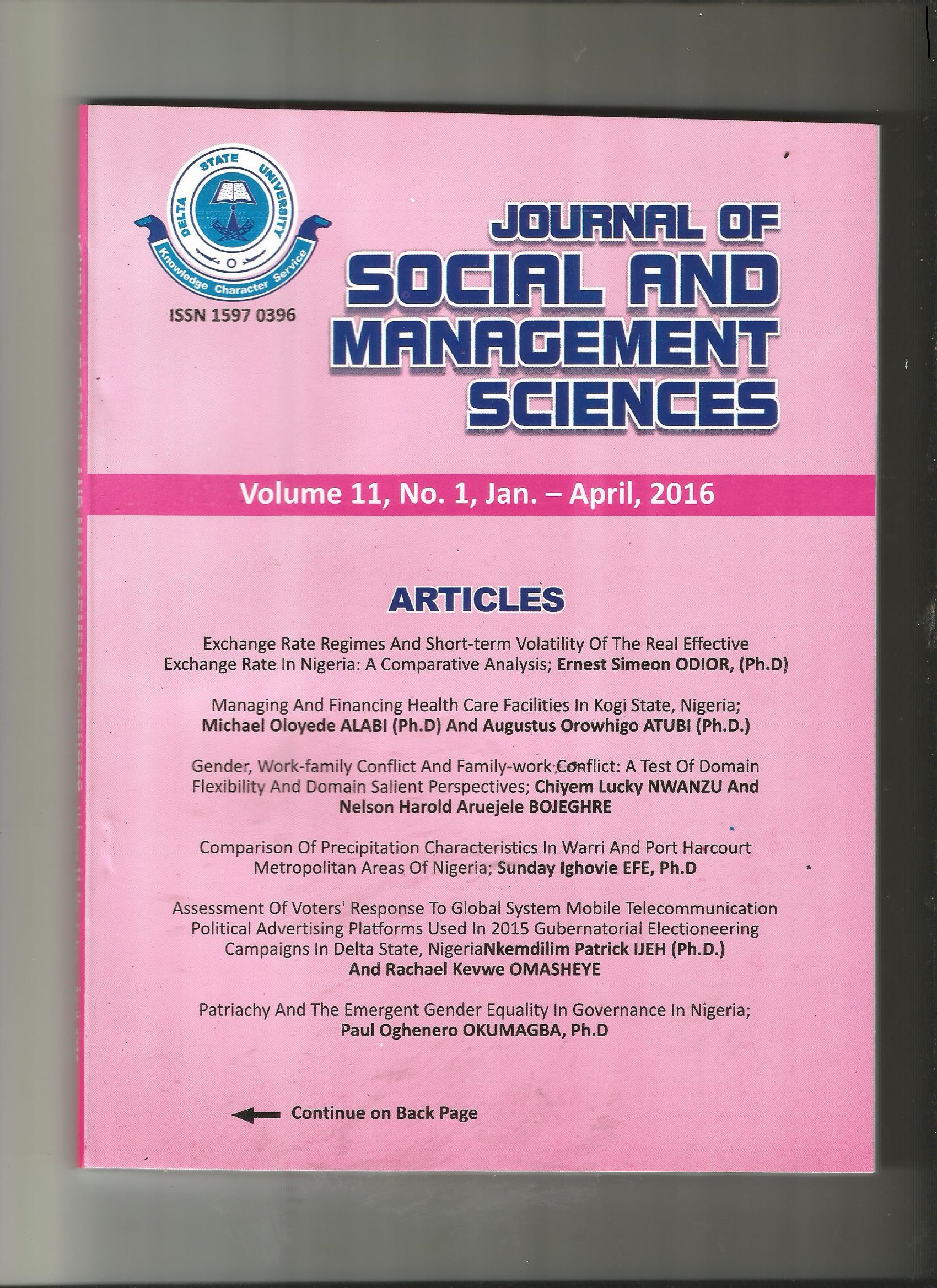
JOURNAL OF SOCIAL AND MANAGEMENT SCIENCES
Journal of the Faculty of Social Sciences, Delta State University, Abraka, Nigeria
ISSN: 1597-0396
DOI: 10.5987/UJ-JSMS
Email: jsms@universityjournals.org
AN APPRAISAL OF PHOTOJOURNALISM PRACTICES IN GOVERNMENT NEWSPAPERS IN NIGERIA: INSIGHTS FROM THE OBSERVER AND THE POINTER
DOI: 10.5987/UJ-JSMS.16.030.1 | Article Number: 2A13A611 | Vol.11 (1) - April 2016
Author: IJEH Patrick Nkemdilim
Keywords: Photo journalism, Technology Acceptance Model, “Grey pages”
Photojournalism is reporting news through photographs. Photographs tell/illustrate stories alone or in company of texts. Although scholars have provided insights into photojournalism, studies on links between state government newspapers and photojournalism in Nigeria are uncommon. This study investigated editorial provisions for photojournalism; editorial practices toward photojournalism, and the nature of photojournalism in selected state government newspapers in Nigeria. Technology Acceptance Model (TAM) provided theoretical framework for the study while data was generated through in-depth interview and content analysis. Findings show that although editors/reporters in selected newspapers are not guided by definite editorial provisions on photojournalism, their understanding of the traditions of newspaper publishing provide “unwritten rules” that encourage photojournalism. Social Issues and Religious Issues were most covered and least covered issues by photographs in the selected newspapers respectively. In spite of the selected newspapers being government-owned, Government activities were not the most covered through photojournalism. These uphold the assumption of TAM that acceptance of technology in selected newspapers was based on usefulness, attitude, social realities, and professionalism. The study recommends that photojournalists be fair and objective in their duties and shun undue photo cropping/image manipulations in photographs. They should also be careful in captioning photographs to avoid misleading or confusing their readers.
